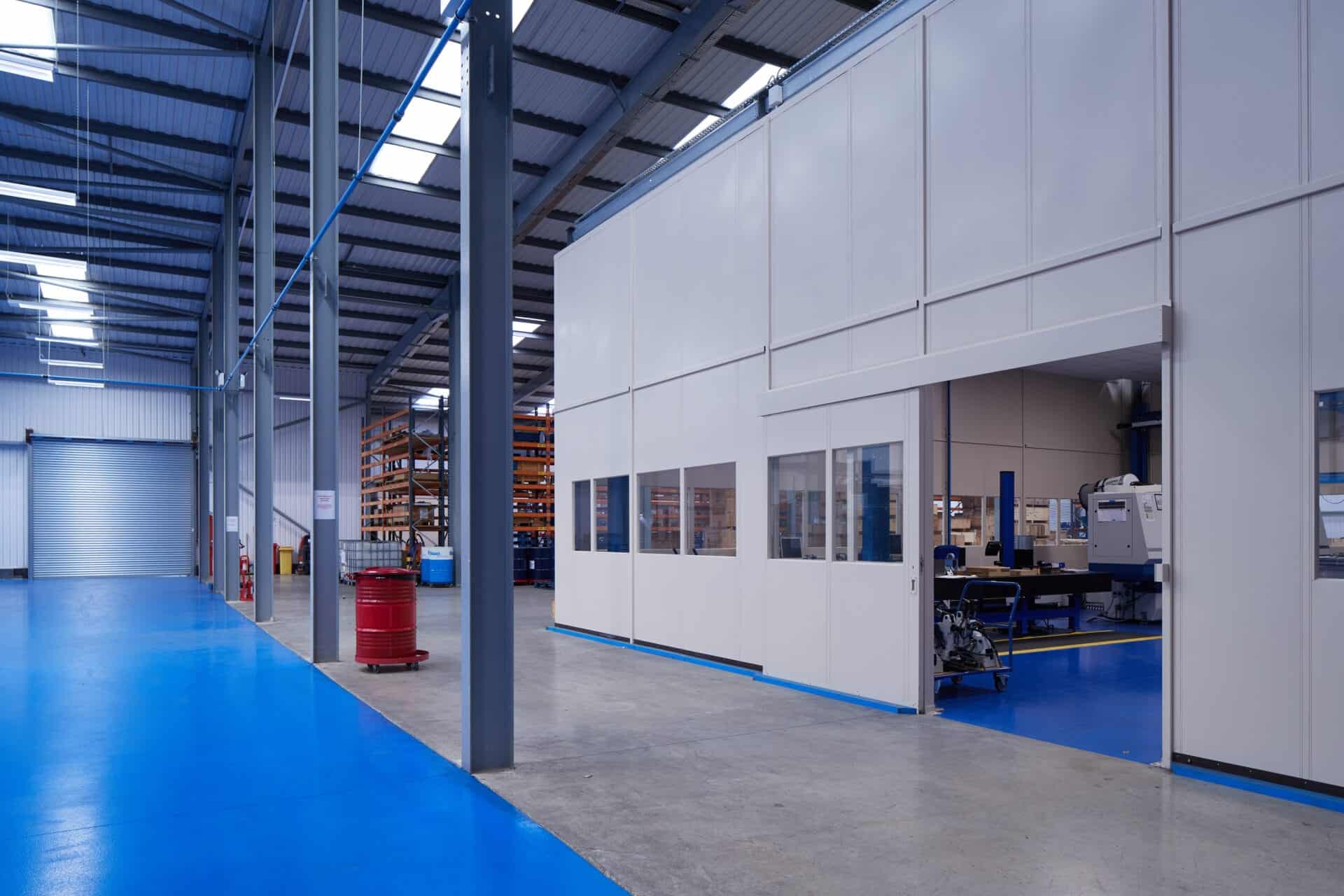In the ever-evolving landscape of manufacturing and industrial operations, efficiency is a critical factor that defines success. With market demands shifting rapidly and production processes becoming increasingly complex, manufacturers are continually searching for innovative ways to optimize their factory floors. Flexible factory partitioning, a strategic solution that enables businesses to dynamically adapt their workspace, enhance workflow, and maximize productivity, is one approach that is gaining significant traction. This article explores what flexible factory partitioning is, its benefits, applications, and best practices to help manufacturers achieve operational excellence.
How Does Flexible Factory Partitioning Work?
Flexible factory partitioning refers to the use of movable, modular, or adaptable barriers to divide and organize factory space according to changing needs. Unlike permanent walls or static layouts, these partitions can be reconfigured quickly and easily, allowing a factory floor to be customized for different production lines, processes, or projects without extensive downtime or structural renovations.
Physical barriers like modular walls, curtains, or movable panels made of metal, glass, or fabric can serve as these partitions. Access control, environmental regulation (temperature, humidity, and dust control), and safety compliance may all benefit from their integration with digital systems.
Why Is Flexibility Important in Factory Layouts?
Manufacturing environments today face unprecedented challenges:
• Rapid product changes: Short product life cycles demand quick retooling.
• Variable production volumes: Scalable space is needed to accommodate seasonal fluctuations in demand.
• Multi-product lines: Factories producing diverse products need segregated spaces.
• Health and safety: Regulations may require physical separation for safety or contamination control.
The inability of traditional fixed layouts to meet these needs frequently results in wasted space, workflow bottlenecks, and costly downtime for reconfiguration. These issues are addressed by flexible factory partitioning, which makes it possible to quickly adapt to changing operational requirements. This flexibility is essential for manufacturers pursuing lean production, just-in-time manufacturing, or Industry 4.0 strategies.
Benefits of Flexible Factory Partitioning
1. Optimized Space Utilization
By creating zones tailored to current operational requirements, modular partitions enable factories to make the most of the floor space they have available. When production lines change, partitions can be rearranged to free up or expand space accordingly, avoiding idle or underused areas.
2. Improved Workflow and Productivity
Partitioning creates clear delineations between work zones, reducing cross-traffic, distractions, and contamination risks. This organization supports streamlined processes and worker focus, leading to higher output and better quality control.
3. fewer
Downtimes Because flexible partitions are quick to install and reconfigure, factories minimize the downtime associated with traditional construction or layout changes. Because of this adaptability, production can resume more quickly after changes, preserving throughput.
4. Enhanced Safety and Compliance
Partitions help segregate hazardous processes, noisy equipment, or cleanroom areas, ensuring compliance with health and safety standards. They can also be used as physical barriers to control contaminants, fumes, or dust.
5. Cost Efficiency
Compared to permanent walls, flexible partitions are generally more cost-effective to install, maintain, and modify. They reduce the need for expensive construction and demolition work and lower disruption costs.
6. Controlling the environment
Partitions can be designed to provide thermal insulation, soundproofing, or humidity control in specific zones, protecting sensitive processes or materials.
Common Types of Flexible Factory Partitions
1. Modular Wall Systems
Prefabricated panels made of metal, composite, or glass that can be quickly assembled or disassembled. These often include features like integrated doors, windows, or soundproofing.
2. Industrial Curtains
curtains made of durable vinyl or fabric that are attached to rails or tracks. They offer a lightweight, inexpensive solution for temporary separation, especially useful in environments requiring quick access or ventilation.
3. Flexible Dividers
Panels mounted on wheels or tracks that can be moved around quickly to dynamically reconfigure space.
4. Partitions for the Cleanroom
Specialized, modular systems that are built to ISO cleanroom standards and are great for manufacturing electronics or pharmaceuticals.
5. Glass Dividers
Glass panels that are either transparent or frosted and serve as a physical barrier while also preserving the room’s natural light flow and visual openness.
Applications of Flexible Partitioning in the Factory
1. Multi-Product Manufacturing
Without the need for permanent walls, factories that produce multiple goods can designate distinct zones for each line. Partitions can be shifted when production priorities change.
2. Areas for Testing and Assembly
Partitions define spaces for assembly, quality control, or testing, ensuring contamination-free environments and reducing interference between stages.
3. Maintenance and Repair Zones
The potentially hazardous or noisy activities of equipment repair and maintenance are kept separate from production in separate areas.
4. Environments under control and clean rooms
Flexible partitions are used by pharmaceutical, biotech, and electronics manufacturers to quickly establish or modify cleanroom zones in response to shifting product requirements.
5. Temporary Production Lines
During product launches or seasonal surges, partitions help quickly create additional production areas that can be removed once demand subsides.
How to Use Flexible Factory Partitioning Best Practices
1. Analyze Needs Now and in the Future
Analyze production workflows, space constraints, safety requirements, and anticipated changes prior to selecting partition systems. A partition that is adaptable should be able to meet both current and likely future requirements.
2. Choose the Right Materials
Consider factors like durability, ease of cleaning, fire resistance, noise reduction, and transparency when selecting partition materials. Vinyl curtains, for instance, might be ideal for quick separation, but modular walls might be better for secure or high-traffic areas.
3. Integrate With Factory Systems
Partitions should work in harmony with lighting, HVAC, safety systems, and access control to maintain optimal working conditions and compliance.
4. Plan for Easy Reconfiguration
Select systems designed for simple, tool-free assembly and mobility to minimize downtime during layout changes.
5. Involve Stakeholders
During the planning process, factory workers, safety officers, and operations managers should be involved to ensure that the partitions meet safety standards and practical requirements. 6. Maintain Regular Reviews
Factory needs evolve; periodically review the layout and partition configurations to ensure continued efficiency.
Case Study: Automotive Manufacturing’s Flexible Partitioning Managing multiple production lines in a small space presented challenges for a prominent manufacturer of automotive parts. Changing product mix necessitated significant downtime and construction costs due to rigid walls. Implementing a modular wall and curtain system allowed them to:
• Isolate and expand assembly lines quickly.
• Improve noise control between areas
• Enhance worker safety by separating hazardous zones
• Reduce downtime during layout changes by over 50%
Within the first year, overall factory productivity increased by 20% as a result of this adaptability.
Conclusion
Manufacturers seeking to maximize efficiency, agility, and safety in a rapidly changing environment can benefit greatly from using flexible factory partitioning. Flexible partitions enable factories to remain competitive and responsive to market demands by facilitating adaptable space configurations, improved workflow, and cost-effective operations. Investing in the right partitioning solutions, aligned with strategic operational goals, allows manufacturers to future-proof their facilities and embrace the full potential of modern production methodologies. Whether through modular walls, industrial curtains, or cleanroom systems, flexible factory partitioning is a vital tool in the quest for manufacturing excellence.



